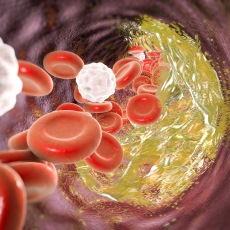
Typically, this is because the vessels are damaged, diseased, or blocked by a fatty. Coronary artery disease (CAD) occurs when the blood vessels can’t carry enough blood and oxygen to the heart. CAD coronary artery disease cal calorie cath catheter CBC complete blood count cc cubic centimeter CC chief complaint CHF congestive heart failure, chronic heart failure CCU coronary care unit CHI closed head injury cm centimeter CMT continuing medication and treatment CN cranial nerve CNA certified nursing assistant CNS central nervous system.
This is due to the buildup of cholesterol and other material, called plaque, on their inner walls.CAD tends to develop when cholesterol builds up on the artery walls, creating plaques. CAD happens when the arteries that supply blood to heart muscle become hardened and narrowed. It is the leading cause of death in the United States in both men and women. The coronary arteries are the blood vessels that supply oxygen and blood to the heart.Coronary artery disease (CAD) is the most common type of heart disease.

This is a type of chest pain linked to heart disease.Angina may cause the following feelings across the chest:Angina might also cause the following symptoms:CAD can also lead to shortness of breath. According to the Centers for Disease Control and Prevention, it is the most common type of heart disease in the United States, where it accounts for more than 655,000 deaths every year.CAD can lead to angina. If these arteries narrow, the heart may not receive enough oxygen-rich blood, especially during physical activity.CAD can sometimes lead to a heart attack.
This clot, if it is big enough, can completely stop the supply of blood to the heart in that blood vessel.The first symptom is usually chest pain that spreads to the neck, jaw, ears, arms, and wrists, and possibly to the shoulder blades, back, or abdomen. ComplicationsA heart attack occurs when the heart muscle does not have enough blood or oxygen, such as when a blood clot develops from plaque in one of the coronary arteries.The formation of a blood clot is called coronary thrombosis. If a plaque has ruptured, it can cause shortness of breath at rest.
MedicationsMedications that people can take to reduce the risk or impact of CAD include: Doctors may also prescribe medications to prevent the progression of CAD.However, some people may need to undergo medical procedures. However, there are ways that a person can manage the condition.Treatment tends to involve making positive lifestyle changes, such as quitting smoking, adopting a healthy diet, and getting regular exercise. If a person is showing symptoms of a heart attack, it is vital to call emergency services immediately.There is no cure for CAD. It can last from a few minutes to several hours.A heart attack is a medical emergency that can result in death or permanent heart damage. The pain is often constant but may come and go.
Angiotensin-converting enzyme inhibitors: These bring down blood pressure and help slow or stop the progression of CAD. Nitroglycerin patches, sprays, or tablets: These relax the arteries and reduce the heart’s demand for blood, as well as soothe chest pain. This helps to “rest” the heart.
This is because aspirin prevents blood clots from forming on plaque. Statins can also cause stabilization of any plaque so that it is less likely to rupture.Current guidelines recommend that people with a history of heart attack, stroke, angina, or other cardiovascular events take aspirin. Statins: One 2019 review found that although taking statins cannot reduce the overall risk of death from CAD, it can prevent development and reduce the risk of non-fatal heart attacks.
The graft may come from the leg, for example, or an inner chest wall artery.Another option is angioplasty and stent placement. SurgerySurgical procedures can open or replace blocked arteries if they have become very narrow, or if a person’s symptoms are not responding to medications.One option is coronary bypass surgery: A surgeon will use a blood vessel from another part of the body to create a graft that bypasses the blocked artery. These strategies can reduce the risk of atherosclerosis. But, in general, doctors usually recommend aspirin if there is a high burden of plaque and a low risk of bleeding.Doctors now also recommend focusing on lifestyle strategies, such as adopting a healthy diet and getting regular moderate to intense exercise.

having a family history of CAD, with early onset (before 55 years for male relatives, before 65 years for female relatives) having high levels of fibrinogen, a blood protein that encourages the clumping of platelets to form blood clots having high levels of the amino acid homocysteine, which one 2015 study linked to a higher incidence of CAD smoking, which increases inflammation and increases cholesterol deposits in the coronary arteriesSome risk factors are not lifestyle-related. having diabetes, in which the body cannot effectively remove sugar from the bloodstream having low levels of high-density lipoprotein, or “good,” cholesterol
Cad Medical Abbreviation Portable Device That
It uses sound waves to provide a video image. Echocardiogram: This is an ultrasound scan that monitors the pumping heart. It records all the electrical activity of the heart, including the heartbeat. Holter monitor: This is a portable device that a person wears under their clothes for two days or more. Electrocardiogram: This records the electrical activity and rhythm of the heart.
A doctor will inject the tracers into the vein. Nuclear ventriculography: This uses tracers, or radioactive materials, to create an image of the heart chambers. CT scans: These help the doctor visualize the arteries, detect calcium within fatty deposits, and characterize any heart anomalies. The dye shows narrow spots or blockages on an X-ray. Coronary catheterization: A specialist will inject dye through a catheter they have threaded through an artery, often in the leg or arm.
Blood tests: Doctors can run these to measure blood cholesterol levels, especially in people at risk of high blood cholesterol levels. Special cameras or scanners trace the movement of the tracers.


 0 kommentar(er)
0 kommentar(er)
